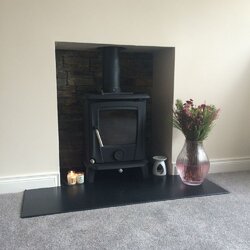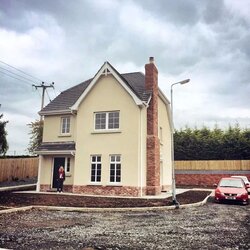Firstly, great forum. I've read some threads on creosote so I know a bit already but I'm trying to find a definitive answer to my own problem. Please bear with me as it is quite long winded.
I recently moved into a new house (3 weeks ago). The house is a new build (unsure of chimney construction). We paid a little extra when it was being built to have a multi-fuel stove fitted.
On first use of the stove, I burned some small sticks that I had in the shed for over a year. The wood felt dry but after around 15 minutes we discovered creosote dripping onto the top of the stove. The fire burned well but I'm guessing now that the wood was too wet. I let the fire go out to stop the dripping.
I tried a second time a few days later and had the same problem.
We contacted the guy who installed it and he gave us a Chimney Cleaning Log (CCL) to burn to get rid of the creosote (last night). The CCL burned fine with little to no dripping. I added some logs to the fire later that night. They had a moisture reading of 22% on a moisture meter. Again the dripping started. It wasn't a small amount of creosote either, it was at least 150-200ml.
The installer thinks that we burned loads of wet wood but it was only a small amount of sticks over the first 2 fires. He insists that it will take at least a week of burning to get rid of the dripping, I'm not so sure.
I don't think it could be this bad from burning such a small amount at the start?
I've attached some photos of the pipe and where the creosote has stained the plaster from dripping. Also added a youtube link to a video showing the problem one night after it had started dripping.
I thought that this sort of stuff shouldn't be leaking on the outside of the pipework?
In total, the stove has been lit about 5 times.
Any advice from someone more knowledgable than me would be greatly appreciated as I'm starting to get worried? What should I do?
Thanks in advance,
Ryan
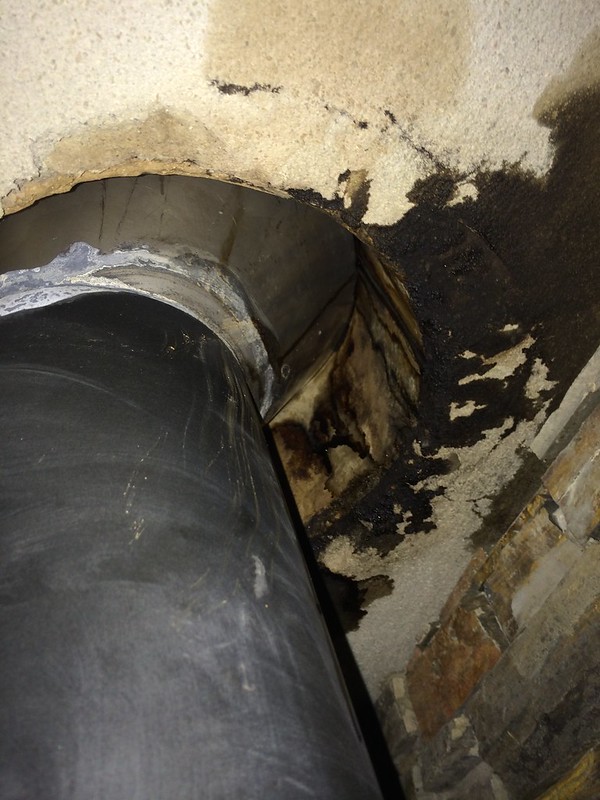
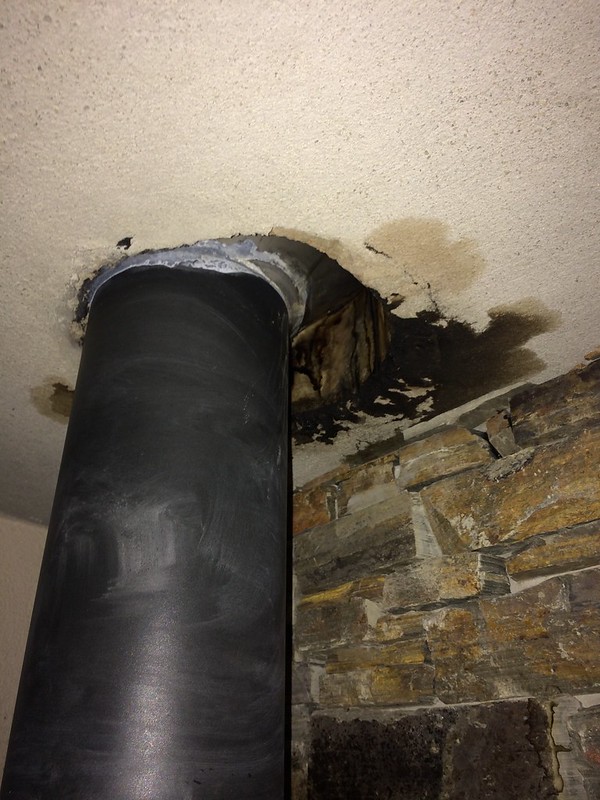
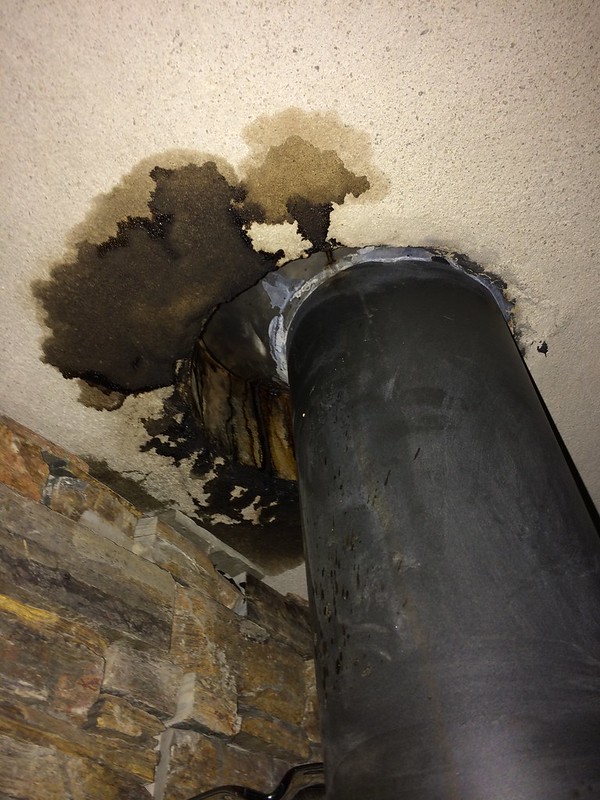
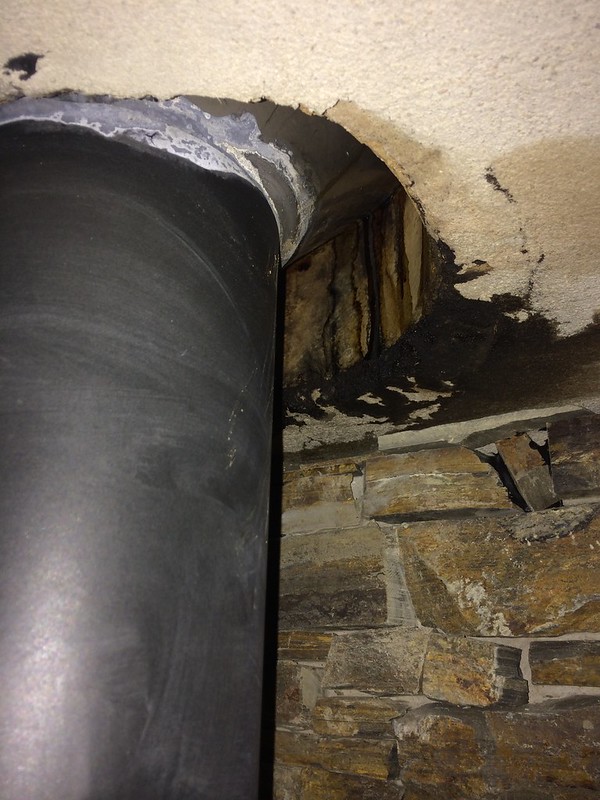
I recently moved into a new house (3 weeks ago). The house is a new build (unsure of chimney construction). We paid a little extra when it was being built to have a multi-fuel stove fitted.
On first use of the stove, I burned some small sticks that I had in the shed for over a year. The wood felt dry but after around 15 minutes we discovered creosote dripping onto the top of the stove. The fire burned well but I'm guessing now that the wood was too wet. I let the fire go out to stop the dripping.
I tried a second time a few days later and had the same problem.
We contacted the guy who installed it and he gave us a Chimney Cleaning Log (CCL) to burn to get rid of the creosote (last night). The CCL burned fine with little to no dripping. I added some logs to the fire later that night. They had a moisture reading of 22% on a moisture meter. Again the dripping started. It wasn't a small amount of creosote either, it was at least 150-200ml.
The installer thinks that we burned loads of wet wood but it was only a small amount of sticks over the first 2 fires. He insists that it will take at least a week of burning to get rid of the dripping, I'm not so sure.
I don't think it could be this bad from burning such a small amount at the start?
I've attached some photos of the pipe and where the creosote has stained the plaster from dripping. Also added a youtube link to a video showing the problem one night after it had started dripping.
I thought that this sort of stuff shouldn't be leaking on the outside of the pipework?
In total, the stove has been lit about 5 times.
Any advice from someone more knowledgable than me would be greatly appreciated as I'm starting to get worried? What should I do?
Thanks in advance,
Ryan






